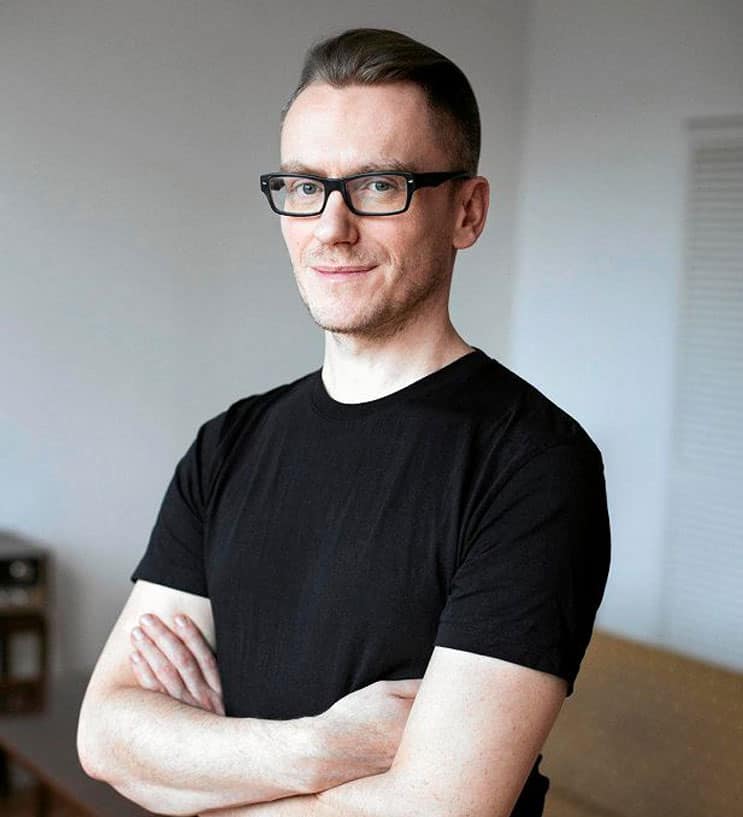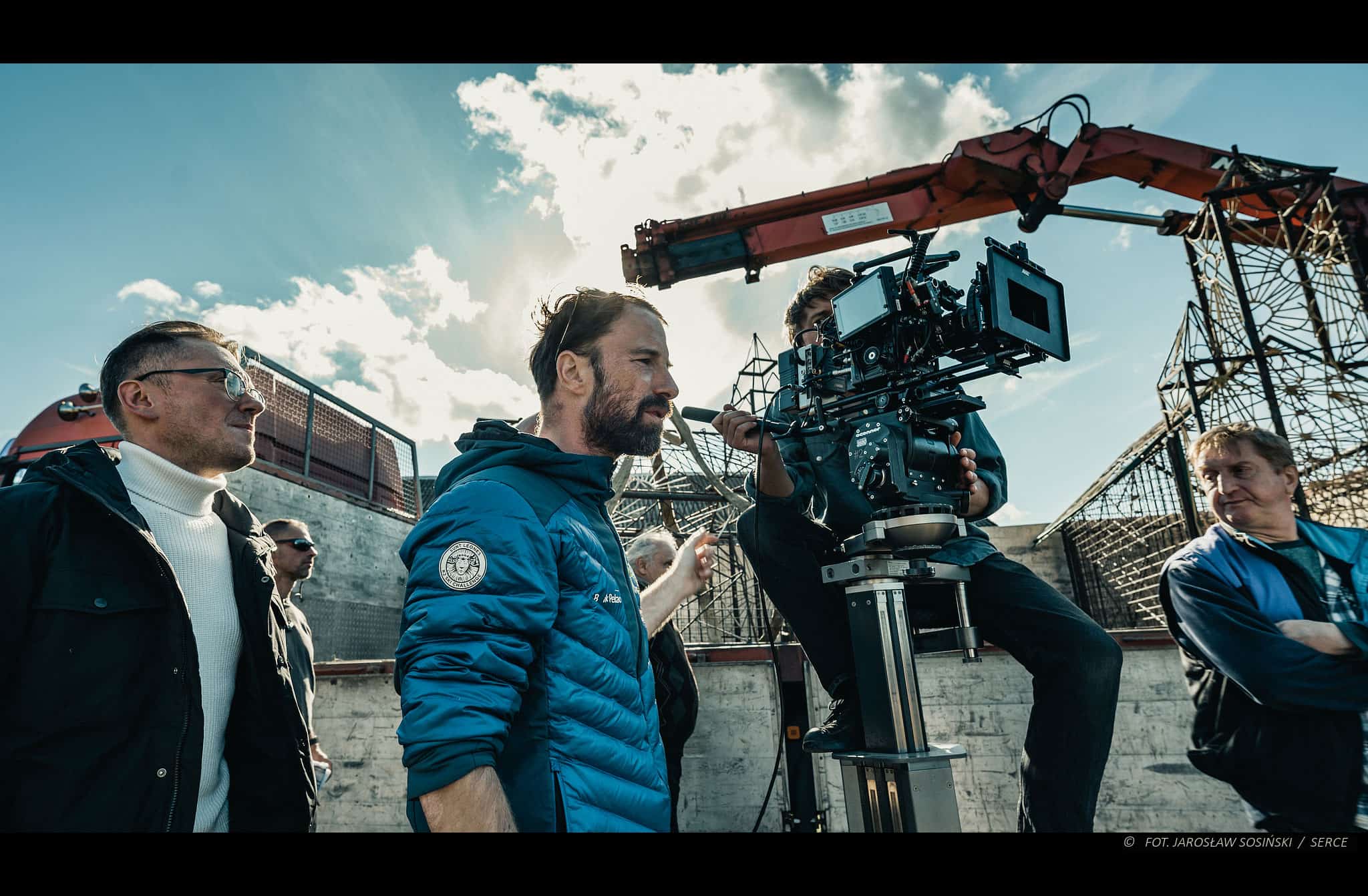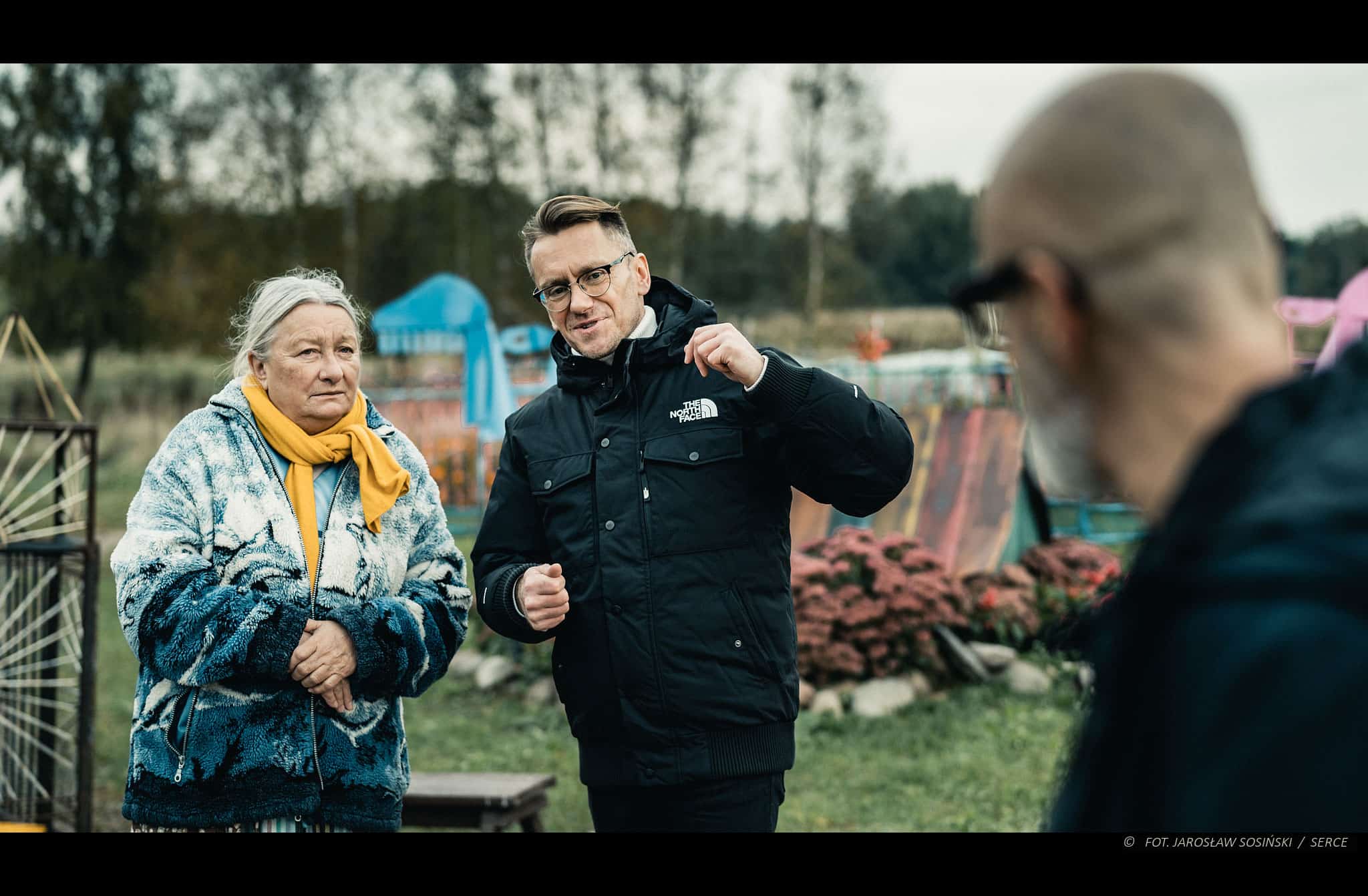Łukasz Ronduda — whose current project All Our Fears [Wszystkie Nasze Starchy] is a distinctly narrative-driven film steeped in the reality beyond art, discusses his practice, his relationship with the art world and the multiple roles he plays within it.
He sheds particular light on his ongoing role as a jurist in the Allegro Prize Competition.

photo Maciej Landsberg
Patrycja Głusiec: Your profession is difficult to pinpoint: art historian, film expert, academic teacher, curator, writer, and director. Wider audiences tend to associate your name with film directing. How would you describe yourself? Could you please retrace the steps that lead you to art and such a flawless means of artistic expression?
Łukasz Ronduda: First of all, I would describe myself as an art historian that works across a variety of mediums, feature film being one of them next to exhibition curating and book writing. After several years of working as a curator and conducting research into the Polish avant-garde, I branched out into film directing in order to find new ways of telling stories about artists, their output and their life.
As far as the origins of my journey towards art are concerned, my meeting with Zofia Kulik was the turning point. We met while I was writing my master’s thesis on Oskar Hansen and the films made by his students. Ever since I got in touch with Zofia Kulik and Przemysław Kwiek, her partner in the duo KwieKulik, I became more fascinated with art that blends almost entirely with life. After this first meeting, it was clear to me that to tell the story of their art practice meant to write about their life, love, separation; parenthood, the extreme poverty they lived in, Zofia’s depression etc. My book KwieKulik (2012) dedicated to this pair of artists is filled with precisely those elements. This book was also my point of departure for other stories about artists, which I later filmed.
PG: On a day-to-day basis you are a curator of exhibitions and film collection at the Museum of Modern Art in Warsaw. What does the role of curator mean to you? What goals does it help you achieve?
ŁR: As a curator and art researcher, you gain a very particular immunity to speaking on behalf of someone else, to conjuring their representation in their stead and of course by ‘someone’ I mean the artists. I’ve always tried to keep close ties with the artists, to work tightly together. It’s a great privilege.
On the other hand, curatorial practice is a versatile language which allows me to address the issues that affect me emotionally, such as the pervading culture war in Poland. I’m interested in curating art in a manner that evokes affinity and empathy towards the opposite side of conflict. Such was the nature of the project I curated at the Venice Biennale in 2019 [Flight, co-curated with Łukasz Mojsak] and such is the nature of the film about Daniel Rycharski on which I am currently working.

The Friends of the Museum of Modern Art in Warsaw at the curator’s guide, the exhibition “Never Again. Art against War and Fascism in the 20th and 21st centuries”, the Museum on the Vistula, 2019, private photo courtesy of Helena Czernecka
PG: Along with Jakub Majmurek you edited the book Polish Cine Art, or the Cinematographic Turn in Polish Contemporary Art [Kino-Sztuka. Zwrot kinematograficzny w polskiej sztuce współczesnej]. Visual artists have been exploring the intersection of contemporary art and film for a long time. However it wasn’t until the late 1990s and early 2000s when their interest in feature film spiked. Could you briefly tell us why? What role does feature film play in today’s art?
ŁR: The cinematic turn is slowly falling into history. It reached its peak a couple of years ago. The origins could indeed be traced back to the 1990s though artists back then had yet to take a critical approach to cinema, deconstruct the medium and extend or work creatively within the boundaries of cinematic form (exceptions to this are Julian Schnabel, Matthew Barney, and Douglas Gordan). But in the first two decades of the 21st century we witnessed the brand-new phenomenon of the so-called cinematic turn arising from the exponential number of artists who strived to occupy both spaces simultaneously: the space of industrially produced narrative cinema reflecting reality, as well as the space of art galleries.
Needless to say, salient examples of such artists would be Steve McQueen and Julian Schnabel, whose films swept myriad international awards for mainstream cinema (both won prizes at Cannes, McQueen also got his Oscar) and who struck a definite chord with popular audiences. On the other hand, we have filmmakers like Albert Serra shooting arthouse films screened at festival circuits (with limited distribution to boot) who started their careers in the visual arts. Many esteemed directors such as Godard, Farocki, Akerman, and Egoyan whose retrospectives were staged at museums joined the art scene due to greater funding opportunities for their films and visited galleries with increased frequency; now they participate in art exhibitions and tap into the funds for film projects offered by galleries and museums.
As for me, participation in the cinematic turn in Poland and abroad signified something along the lines of ‘fidelity to an event’ as defined by Alain Badiou, an incredible experience of observing an expansive artistic movement. In Poland, the cinematic turn had broad and significant implications for the institutional and artistic course. Extreme diversity of aesthetics among the Polish cinematic movement makes it borderline impossible to find the common denominator in films by Piotr Uklański, Wilhelm Sasnal, Izabella Gustowska, Zbigniew Libera, Hubert Czerepok, Karolina Breguła, Norman Leto, Anna Baumgart, Wojciech Puś, Karol Radziszewski, or yours truly, making film from the perspective of an art curator. All the artists mentioned above gravitated towards longer running times, eschewed documentary style for the sake of feature film (or adopted a creative mixture of both genres), focused on the subjects and forms that still intimidate mainstream cinema, and exhibited the highest levels of professional execution.

“New National Art” exhibition, photo Jan Smaga
PG: Why did you decide to start making feature films? What does feature film offer you as an artist?
ŁR: As a filmmaker, I’m always interested in portraying the artists whose art and life fuse so completely into one another that they form a symbiosis of sorts, this all-encompassing phenomenon incongruent with the established institutional (that is, museum or gallery) format unless compromised or diminished in one way or another. Feature film as a medium for presenting their art and life gives me a lot of possibilities, defying the current paradigm of art institution. The narrative tools of feature film make it easier for an audience to relate to the characters on screen, who in my films are contemporary artists. Rarely do art institutions themselves engage in such practices. Instead, they foster understanding of the discourses or concepts behind works of art. In this process, I tried to reduce neither art nor the specialist discourse used to convey its meaning but to fit them with narrative which affords a more direct connection with the audience. I wanted to keep a balance between these two aspects.
What is more, the words of Krzysztof Kieślowski on his transition from documentary to feature film provided a significant point of departure for the films of my own. The director abandoned documentary filmmaking because he was afraid of hurting his subjects, of crossing the boundaries of their intimacy in his pursuit of emotional truth. Fiction holds far greater potential in this area – the area of telling stories about difficult emotions and intimacy – with no need to renounce a close connection with the documented reality of an artist. For this reason, I was captivated by the idea of time in film which is typically associated with documentaries; I specifically worked out a creative method of making feature films that would allow me to show events on screen as if they represented real-life events happening right before my eyes.
It’s the quality of documentary films, this easiness of capturing reality as it is. Now is what matters to me, the current moment in life and art, both of my own and of the progenitors of my characters. In A Heart of Love, Performer, and right now All Our Fears, the characters and their real-life antecedents move in sync because the cinematic representation is bound closely to the state of reality at a given moment in time. I tried to capture something current through the vibrant and evolving medium of cinema. I tried to capture a person embedded inside the present, someone who Andrzej Wajda would have called ‘the hero of our times’: the living embodiment of the world we live in and its gravest concerns. Daniel Rycharski is clearly such a person.
PG: Daniel Rycharski, an artist who is both a member of the LGBTQ community and a Christian, is the main character of your upcoming feature All Our Fears. Your previous films – A Heart of Love, dedicated to Zuzanna Bartoszek and Wojciech Bąkowski, and Performer, about Oskar Dawicki – concerned not only the portrayal of artists but also a modern love marked by narcissism and contemporary performance art, respectively. Do your vivid characters become metaphors for our times? What is it in this person, not the other, that makes you stumble across them and turn them into characters?
ŁR: Charismatic personality has always been my main starting point even though it’s not enough to drive a whole film. In case of Performer, the underlying idea was to stage an exhibition of Oskar Dawicki’s in the form of a feature film. The film has the structure of an exhibit. Subject came later, it was the artist’s own depression. Still, the film was very much focused on strictly artistic operations, referring more strongly to the performative turn in art rather than the social and political reality. Then there was Bąkowski: it was clear to me that here was yet another strong figure conjuring an incredibly fascinating world and set of emotions on film, but I still grappled with the subject for quite a while. At some point something just clicked and the subject emerged in the form of a romantic-creative relationship between Wojciech and Zuzanna Bartoszek, his partner. I continued to investigate the subject with my screenwriter Robert Bolesto. They formed an exceptional pair with an extremely tumultuous history. Their uncanny resemblance pertained to physical appearance as well as the spiritual and artistic spheres of life; they encoded their style and public image to perfection but failed to reign in the fervent emotions that ruled their relationship. The film’s subject was modern narcissism. It’s a film about an individualistic anarchy banishing political thinking. Whereas the catalyst for All Our Fears was Daniel Rycharski’s piece titled Krzyż [The Cross] made of wood from the tree where two LGBTQ teenagers committed suicide. It will be the most narrative-driven and socially engaged film I have made so far.

Break My Art, “Performer”, PURO Hotel Łódź, 2019, courtesy: PURO Hotels
PG: You’ve had the chance to sit on the jury of multiple, usually film-related competitions over the years. This time around, you’re a jury member in the Allegro Prize, international competition for visual artists. Why take part in this particular competition?
ŁR: In the midst of the pandemic, every kind of support for the artists’ community is priceless. There’s a huge necessity to launch these sorts of competitions, as well other initiatives aimed at artists.
PG: Will you look out for submissions that engage in a dialogue with film? Which qualities will you pay special attention to?
ŁR: I certainly won’t be paying any special attention to film as opposed to other mediums. I’ve gained respect for contemporary art after making feature films. What I value most is what sets it apart from other areas of culture, what molds its distinct character and the way it defines current non-artistic reality. That’s what I will look for.
All Our Fears [Wszystkie Nasze Starchy], photo: Jarosław Sosinski
All Our Fears [Wszystkie Nasze Starchy], photo: Jarosław Sosinski










